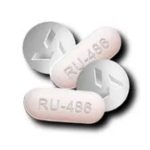Neither the states legislation which permits abortion in all circumstances, nor the various limited legality or interpretations, such as the Levine ruling (R v Wald [l971] 3 DCR (NSW) 25) or the Superclinics case ((1995) 38 NSWLR 47) have been tested in the High Court of Australia.
Help Fund a High Court challenge to these totalitarian laws
Levine Ruling
Judge Levine extended the R v Davidson ((1969) VR 667) test so that a medical practitioner could take into account non-medical considerations in determining whether or not there existed a serious danger to the woman’s health. In addition, the Levine ruling seems to impose a requirement that an abortion performed by a medical practitioner would be considered lawful.
R. v. Davidson
Justice Menhennitt, in his final direction to the jury, provided the following declaration as to what constitutes a lawful abortion:
“For the use of an instrument with intent to procure a miscarriage to be lawful the accused must have honestly believed on reasonable grounds that the act done by him was (a) necessary to preserve the woman from a serious danger to her life or her physical or mental health (not being merely the normal dangers of pregnancy and childbirth) which the continuance of the pregnancy would entail; and (b) in the circumstances not out of proportion to the danger to be averted.” ((1969) VR 667, 672)
Superclinics Case
In the 1995 Superclinics case, the Court held unanimously that abortions remain prima facie unlawful in New South Wales. There is no such thing as abortion-on-demand in New South Wales, but rather abortions are only “lawfully available in the limited circumstances described in Wald.” *
The subjective nature of the test for when an abortion will be lawful causes not only much confusion and leaves the abortion providers with much room to manoeuvre and potentially exploit women and the unborn for the sake of commercial gain. At this stage Superclinics may be said by some to represent the law in New South Wales and Queensland. In the absence of a High Court ruling, the Kirby ruling in the New South Wales Court of Appeal seems to represent the legal position on abortion perhaps in that State.
*Superclinics (1995) 38 NSWLR 47, 82 Priestley JA
Dr. Suman Sood Case
Dr Suman Sood Sood v R [2006] NSWCCA 252
However, while many women assume that they have a right to abortion on demand in New South Wales, the Suman Sood case shows that this is not the case. The case involved a 20-year-old woman who came to see Dr Sood shortly after she discovered she was 23 weeks pregnant. That night, at home, the woman gave birth into a toilet bowl. Dr Sood was found guilty of two counts of unlawful administration of an abortion drug (taken orally and vaginally) to procure an abortion, but was acquitted of the manslaughter of the premature baby boy.
The Suman Sood case of 2006 created a lot of nervousness among women’s health services and abortion providers as it was going to test the Crimes Act provisions which had not been thoroughly tested since 1971. Presumably, commentary on whether the Levine ruling represented the correct interpretation of when an abortion is lawful in NSW could have been explored but was by and large neglected.
The Sood case in New South Wales is evidence of systemic problems around the abortion industry and medical profession. Arguably, one could conclude that abortionists were protected species until Sood’s conviction and deregistration. Hence, the Sood case is powerful and logical reason to keep abortion provisions within the Crimes Act.
Read Aide-memoire to the High Court Superclinics Litigation









